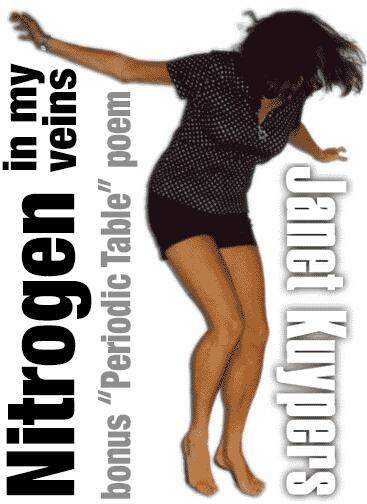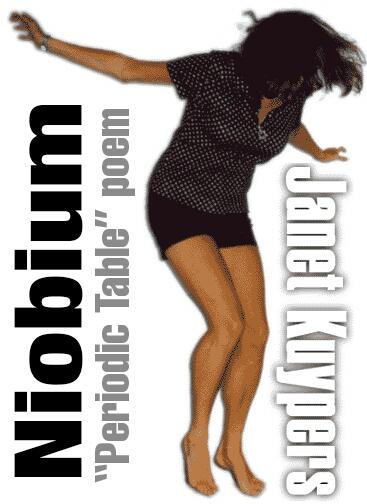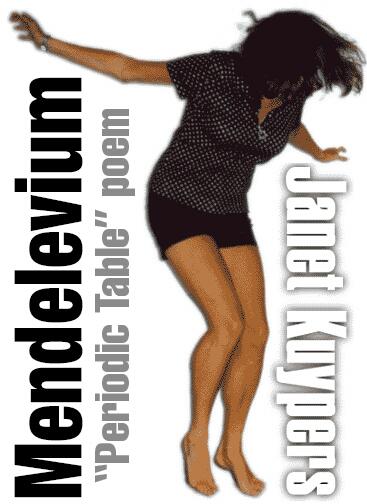Old Star, New elemental Tricks
Janet Kuypers

bonus poem from the “Periodic Table of Poetry” series, with Arsenic (#033, As) and Selenium (#034, Se)
7/24/13
When the Big Bang first exploded,
the only elements it could muster
were hydrogen and helium
and a smidgen of lithium and boron.
Higher elements were only created
after the creation of stars.
But scientists have now discovered
that in an ancient star
in the faint stellar halo
surrounding the Milky Way,
astronomers have detected
the presence of Arsenic and Selenium.
Now, I’ve only known Arsenic
as highly toxic, and scientists
pulling phosphorus from the sextet
of life while down at the Arsenic-rich
Mono Lake to fill DNA with Arsenic.
And Selenium is used for horses,
but can kill a person if ingested
regularly (even leaving a garlic
taste when given to victims).
Hmmm, and I like garlic so much…
But these two elements,
sitting right next to each other
in the Periodic Table, transition
from light to heavy elements,
and have never been found
in old stars — until now.
You see, stars like our sun
usually make the lighter elements
(like, up to oxygen),
and heavier stars can make
elements as high in the Periodic Table
as iron. Any elements
heavier than that
(like Arsenic and Selenium)
have to be made by
neutron-capture nucleosynthesis.
So, thanks to the nuclear reaction
from inside the heaviest of stars,
scientists found Arsenic and Selenium
in a 12 billion year-old halo star.
And they say the universe
is like 13.77 billion years old,
so when I’m talking old star remanants,
I’m talking infancy of the universe stars.
(And we thought we were the only ones
who know how to utilize these
poisonous elements here on earth,
and now we see that stars
from the ancient history of this universe
have been creating this stuff for eons…)
So they’ve discovered
quite a new trick
from this old star,
which means we now know how to look
for elements in other stars,
and maybe explain why
some elements appear on earth.
Cause, it’s all science,
and we can explain away
the mysteries of what’s good
and bad here on planet earth,
and trace it all the way back
to the toddler years of
this entire universe too…




